-
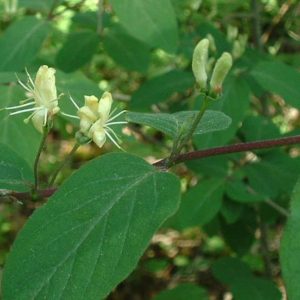
Fly Honeysuckle Seed
Lonicera xylosteum£5.00 inc. VATFly Honeysuckle is a small to medium sized deciduous shrub with grey/blue-green foliage and untidy habit. Its flowers are not as showy as other honeysuckles, being a creamy white and flowering for 2 weeks in late spring. It is however pollution tolerant and produces red poisonous fruits later in the year. Although native to Eurasia, it is naturalised in most of America.
-
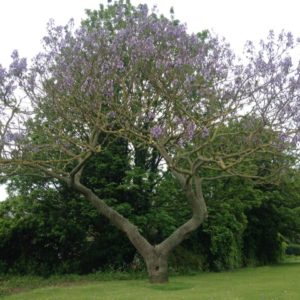
Foxglove Tree Seed
Paulownia tomentosa£10.00 inc. VATAn exotic looking tree that, in suitable positions, produces panicles of foxglove-like purple flowers. They appear in the spring before the leaves. The deciduous leaves are large and hairy and can grow huge if the tree is pollarded, (branches cut back to the main stem) every couple of years. A really fast growing tree and in America and Asia is used for timber production. An old tradition in China is to sow a Paulownia seed when a girl is born and to chop the tree down when she marries, using the timber to make furniture for the newly-weds!
-
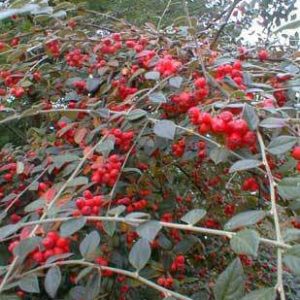
Franchet’s Cotoneaster Seed
Cotoneaster franchetii£6.50 inc. VATFranchet’s Cotoneaster is a popular semi-evergreen shrub that is graceful and medium sized with sage green foliage. The white flowers blushed with pink give rise to ovoid scarlet-orange fruits. Soft relaxed growth can be pruned in to shape.
-
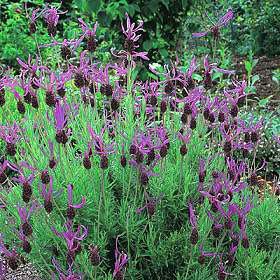
French Lavender Seed
Lavandula stoechas£5.00 – £10.00 inc. VATFrench Lavender is an intensely aromatic shrublet with narrow grey leaves. The dark purple flowers are borne in dense terminal heads which are topped by prominent purple bracts, very attractive to bees. Plants require a warm sunny position and are often used as a low, informal hedge which needs to be lightly trimmed after flowering. It has a more acid scent than English Lavender
-

Gagnepain’s Barberry Seed
Berberis gagnepainii£7.00 inc. VATA small evergreen shrub that forms an impenetrable thicket making it ideal for hedges. The yellow flowers are borne in clusters of 6 or 12, in early summer, which give rise to black berries with a bluish bloom. Tolerant of most conditions.
-
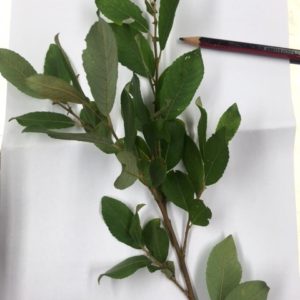
Goat Willow Seed
Salix caprea£6.00 inc. VATGoat or Pussy Willow is more an upright, deciduous shrub than tree. One of the commonest and most tolerant of our native trees. It is quite often a tough pioneer of inhospitable damp sites and thrives on poor soil. Early in spring the male flowers appear – the soft, silky, silver hairy buds which give rise to the name ‘Pussy Willow’. These turn into fluffy balls of pollen. Female flowers, on separate trees, are long green catkins that erupt into white fluff surrounding the seed in May or June. The leaf is very variable.
-
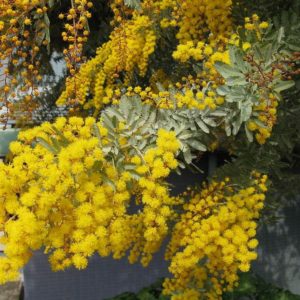
Golden Mimosa Seed
Acacia baileyana£6.00 – £25.00 inc. VATGolden Acacia or Cootamundra Wattle is a small evergreen tree/large shrub with silver grey ferny leaves and short spikes of pompom flowers between Dec and March. Lots of Pollen is produced so the tree is good for early insects. In fact it is planted for honey production commercially as well as for floristry. However, in warmer countries it tends to escape and be a bit of a plague in the wild. In the UK, it definitely needs to be in a conservatory or very sheltered sunny corner. Quite tolerant of drought.
-
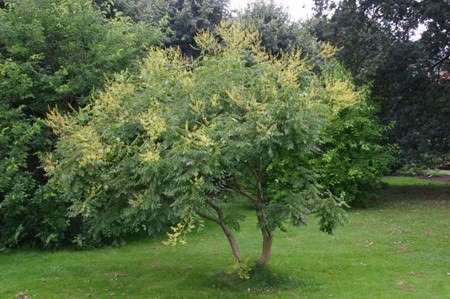
Golden Rain Tree / Pride of India Seed
Koelreuteria paniculata£5.00 inc. VATThe Golden Rain Tree is a broad headed deciduous tree up to 12m high with pinnate leaves made up of 9 to 15 leaflets. In mid to late summer it produces small yellow flowers on large panicles which give rise to the air filled bladder like fruits containing the seed. In autumn these decorative bladders can turn from yellow to pink and then brown and are almost more ornamental then the flowers!
small pic courtesy of Gerd Eichmann / CC BY-SA
-
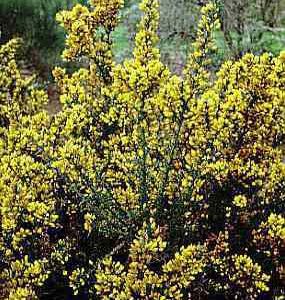
Gorse Seed
Ulex europaeus£5.00 – £10.00 inc. VATGorse is a dense fiercely spiny shrub. In mild areas the yellow, pea-like flowers, smelling of coconut, are produced throughout the year but more usually they flower from March through to May. Brilliant for insects. The shrubs thrive on, and prefer, very poor light or stony soils. They can act as good pioneers, nursing other less tough plants until they’re big enough to survive. No maintenance necessary, but can be pruned quite hard (using armoured gloves!)
-
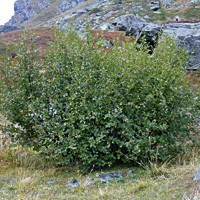
Green Alder Seed
Alnus viridis£8.00 inc. VATThis is a deciduous short lived shrub, but can become a small tree. Unlike other Alder species, long yellow catkins (up to 10cm) are borne in April when the tree is already in leaf. It has a smooth grey bark with shiny green leaves. Sometimes it is used as a nurse crop for timber trees since it doesn’t grow too big and compete. It also fixes nitrogen from the air. Often found growing with Willows it is usually one of the first to colonize scree.
-
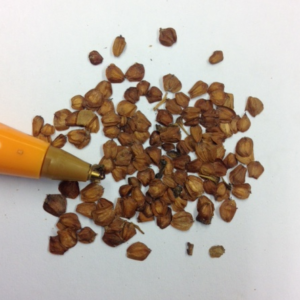
Grey Alder Seed
Alnus incana£5.00 – £12.00 inc. VATGrey Alder is an ideal small tree or bush for cold and wet situations. This very hardy tree has grey undersides to its leaves with yellowish brown catkins which are borne in late winter. The leaves are pointed at the end which makes it easier to distinguish between this and A. glutinosa. It has root nodules, as with other Alders, that fix nitrogen from the air and therefore helps with soil fertility – good for sites that need pioneers.
Not for forestry purposes.
-
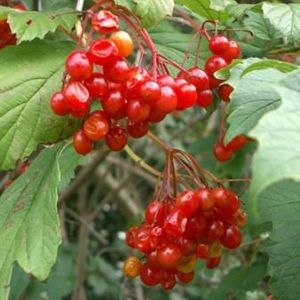
Guelder / Guilder Rose Seed
Viburnum opulus£5.00 inc. VATGuelder Rose is a large vigorous shrub with 5 lobed maple like leaves which colour well in autumn. It produces flattened clusters of white flowers, (a bit like hydrangea flowers), in summer followed by red translucent fruits in the autumn, beloved of winter migrant birds. Can be pruned/trimmed in winter, quite hard. This is one of the prettiest seeds around – they are heart-shaped and various shades of pink!
-
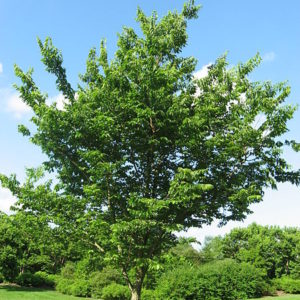
Hackberry Seed
Celtis occidentalis£5.00 inc. VATHackberry is a deciduous tree although it can be evergreen in very warm climates. It has a deeply fissured corky bark. In the UK it rarely produces its black fruits.
-
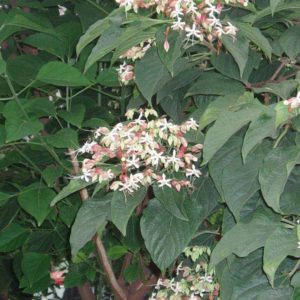
Harlequin Glorybower Seed
Clerodendron trichotomum£5.00 inc. VATA soft leaved, deciduous, medium shrub with exotic white flowers and pink calyces in late summer. These are followed by white, maturing blue fruit sitting in the now cerise calyx. Flowers are heavily scented and leaves have a musty smell when crushed, redolent of peanut butter.
-
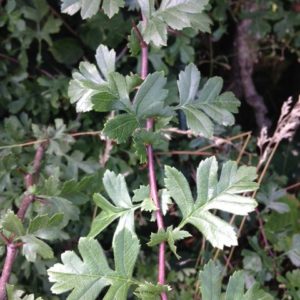
Hawthorn Seed
Crataegus monogyna£5.00 inc. VATHawthorn is a British native hedging plant. It produces a spectacular profusion of flowers in late spring which are visited by all sorts of different insects. There are red-brown fruits (haws) in the autumn. Hawthorn can make a large shrub or a small tree. It is also known as May or Quickthorn and is surrounded by superstition and folklaw. It is associated with May-Day and other spring festivals. Even in Anglo-Saxon times it was used to mark boundaries and it is one of the most common hedgerow trees, being amenable to chopping, laying, flail mowing etc
The 2nd small picture shows unusual hawthorn topiary at Bryan’s Ground Garden in Hereford and 3rd pic is seed being stratified in our fridges, mixed with damp peat.
-
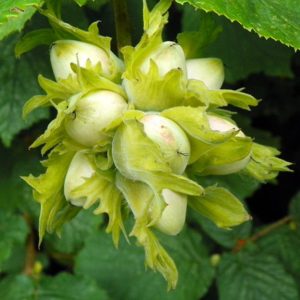
Hazel / European Hazel / Cobnut
Corylus avellana£5.50 inc. VATHazel is a large shrub or small multiple stemmed tree that produces delicate, yellow, long female catkins called lambs tails in late winter. Visited by very early insects It is used in large gardens as a shrub for screening. It produces the edible hazelnut. Every 8-10 years the long stems that have grown can be chopped down to very near ground level and the crown will start to grow again. This is Coppicing(pic is a mature coppice in Ireland)and is great for wildlife, since it provides dappled shade and open spaces. The resultant timber can be used for baskets, chairs, burning, turning and weaving into fences. Commercially selected varieties are grown for nuts in Kent, but also in Turkey for chocolate and chocolate spread manufacture (no names mentioned, ambassador!)
-
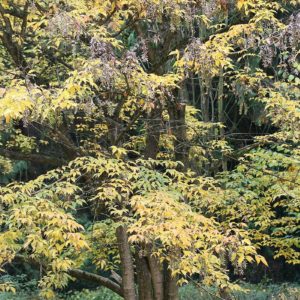
Henry’s Maple Seed
Acer henryi£5.00 inc. VATHenry’s Maple is a rare, small deciduous tree, often multi-stemmed when mature. It grows a wide, flatish crown and striated bark. The trifoliate leaves have fine red stems, hairy veins and good autumn colours of red, yellow and orange. Native of China, it was introduced to UK in 1903, but is still rarely grown. It is an excellent tree for smaller gardens since it casts only light shade and doesn’t grow too tall.
-
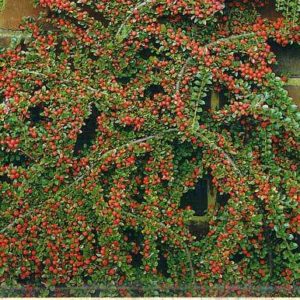
Herringbone Cotoneaster Seed
Cotoneaster horizontalis£5.00 – £10.00 inc. VATHerringbone Cotoneaster is low growing deciduous shrub with branches arranged like fish bones. It can be pruned quite hard without suffering. It bears bright red fruits in autumn together with a richly coloured foliage, and the branch arrangement in winter if grown against a wall is most attractive. The bees really enjoy the pink flowers, but the birds are slow to eat the berries.
-
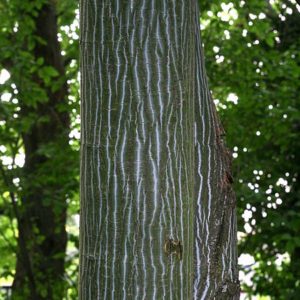
Hers’s Maple Seed
Acer grosser var hersii£7.50 inc. VATAcer davidii subsp. grosseri var hersii
Hers’s Maple is another Snakebark Maple, with olive green bark, striped with white and cream. It grows to be a small, round headed, graceful tree, sometimes multi-stemmed. The deciduous foliage is almost oval with 3 indistinct lobes. Autumn colour is orange and yellow. No pruning is needed. Useful for a smaller garden.
-
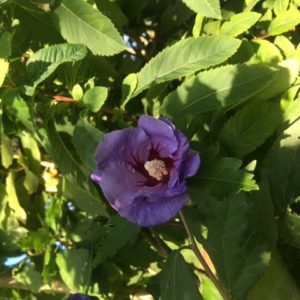
Hibiscus or Tree Hollyhock Seed
Hibiscus syriacus£5.00 inc. VATHibiscus is a late flowering, large or medium sized deciduous shrub. The large blue/purple trumpet shaped flowers are most impressive as they open between midsummer and autumn. Twiggy growth that can become congested, but requires no regular pruning. It is very slow to come into leaf, only just appearing alive by mid May. The seeds look like small sea animals with fine cilia hairs round the edges for swimming!
-
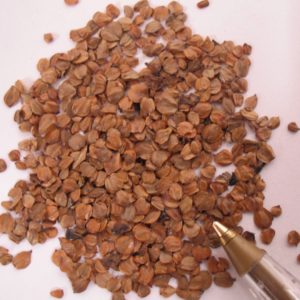
Himalayan Alder Seed
Alnus nitida£5.00 inc. VATHimalayan Alder is a nitrogen fixing tree good for growing in poor wettish soils and is very hardy. It will enrich the soil it is planted in. Unlike other Alders, the decorative male catkins are produced in autumn, not spring. They are very long. New growth tends to be purplish. It is used as a street tree in Pakistan, but not often grown here in UK.
-
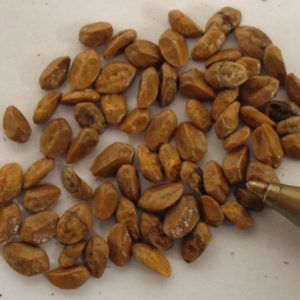
Himalyan cotoneaster seed
Cotoneaster simonsii£5.00 – £11.50 inc. VATCotoneaster simonsii is a large upright semi-evergreen with small white/pink flowers in June, bee friendly, followed by persistent red berries. Good as an informal hedge but can also be clipped quite hard into shape. Often known as Himalayan Cotoneaster, but this leads to confusion with other Cotoneasters.
-
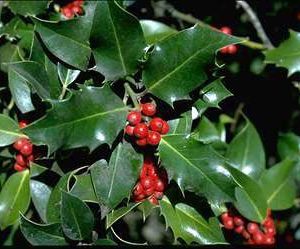
Holly Seed
Ilex aquifolium£5.00 inc. VATAn evergreen shrub or tree that can be very long lived with leaves that are ovoid, shiny and generally spiky. In winter, bright red holly berries contrast beautifully with the dark green foliage. There are some varieties with yellow berries, and some with non-spikey leaves. Usually a male and a female tree are required to produce berries on the female. Very useful for hedging, it grows quite fast to begin with but slows down as it ages. It can be clipped into shape(carefully!)
-
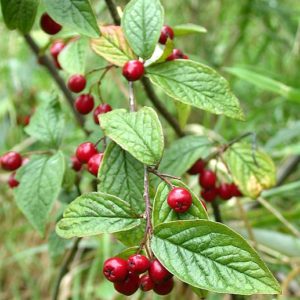
Hollyberry Cotoneaster Seed
Cotoneaster bullatus£6.00 inc. VATHollyberry Cotoneaster is one of the larger cotoneasters. It is deciduous with corrugated leaves that colour richly in the autumn. The white or pink flowers give rise to large red fruits in early autumn which are attractive to birds. It is quite often used in landscaping schemes, roadsides etc and soon spreads, birds taking the berries and spreading the seed. It can be seen a menace but is useful on inhospitable sites.


Sign up to receive great news and offers